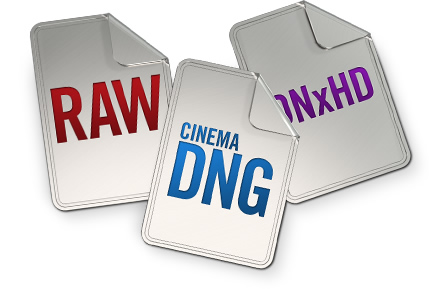Courses
Codecs, formats and workflows course December 2012
All professionals working in high definition deal daily with codecs, formats, media, etc. But what are the differences between them, do we know how to choose the most convenient processes for each project or production, how do we deal with products that will have multiple destinations, windows and countries? Each choice or process can lead to a decrease in the quality of the final product or an unnecessary increase in production costs. By choosing all the right technical processes we can build the most convenient workflow for each project to optimize resources, time and costs, without lowering the quality of the product.
In this intensive theoretical codecs course we will first establish the technical bases on which high definition and digital cinema are based (422, 444 sampling, compression types, etc.), not simply saying the data but exemplifying them, so that their use in daily work is understood. Then the most relevant camera concepts for digital image construction (logarithmic curves, Raw, LUTs, etc) will be explained, again showing the cases in which some systems or others are more useful. Finally, the most optimal post-production workflows will be explored to preserve and improve all the quality shot on film, to end up in the different destinations: cinema, HDTV, internet, mobile, etc. This is a course that teaches the essential ingredients of digital cinema, enabling the student to develop for himself the recipe or workflow best suited to each production.
DURATION: 12 hours
TEACHER: Luis Ochoa.
Luis Ochoa is a colorist, post-producer and director of photography. In recent years he has worked as a colorist in London, color grading projects for the LFS, and in Spain color grading feature films (Cecilia y Juan), documentaries (Por la gracia de Luis) or television (Tierra de Lobos). He has coordinated the post-production of numerous projects for the company Avid Technology and holds the ACI (Avid Certified Instructor) certification.
You can see here some examples of his work and here his IMDB profile.
EQUIPMENT EMPLOYED: This is a theoretical course in which the teacher will use the camera equipment and post-production software needed to exemplify the contents: Avid Media Composer, DaVinci Resolve, Apple Color, HD cameras, HD monitors, etc.
AIMED AT: Producers, post-production coordinators, editors, directors of photography, filmmakers and all those who want to learn the necessary basis for the design of any production workflow.
PREVIOUS KNOWLEDGES: Basic cinematographic notions of camera and post-production. Although this is a very technical theoretical course, all concepts will be explained so that they can be understood without previous technical experience.
PRICE: 280€ (250€ booking before November 24th) Possibility of other discounts, not cumulative with each other or with the early booking discount.
WHEN: December 15th and 16th. Saturday from 16 to 20h and Sunday from 10 to 14h and from 15:30 to 19:30h.
WHERE: Ondas Formación. See in Google Maps. If you need any kind of information you can contact 709 MR by email or phone (668840783).
COURSE CODE: WF50-151212
GENERAL OBJECTIVES:
- To be able to establish a workflow design for each project.
- Know the differences and advantages of all current video formats.
- Learn a basis for understanding the new flows and formats that will arrive
CONTENTS:
SD, HD AND DIGITAL CINEMA VIDEO SIGNAL:
- PAL and NTSC differences.
- Frame rates in PAL and NTSC: Frame rate drop frame and non drop frame
- International mastering: what frame rate to record at depending on the destination country?
- Digital signal resolutions SD, HD: 576, 720, 1080
- Pixel ratio: square and non-square.
- Higher resolutions than HD: 2K, 4K, 5K, 8K.
- Samples: 422, 444…
- Quantification: 8 bits, 10 bits…
- Interlaced, progressive, PSF. Differences between capture and recording.
- When and how to use compression? Types of compression: Intraframe and interframe. Compression ratio.
- Calculation of the weight of the material in shooting and post-production.
- Codec concept. Camera and post-production codecs
- Table of current HDTV and digital cinema codecs. Characteristics and comparison.
- Legal television broadcast signal. RGB and YUV digital color models.
- Digital connectors: HD SDI, dual link, Y Pr Pb. 3G HD SDI. HDMI…
- Media and metadata concepts.
- Media types: tapes and files: MXF, QT, AVI, RAW…
- Media: Tape, solid-state memory, hard disk…
CAMERAS
- CCD and CMOS sensors. Dichroic block and Bayer matrix. Characteristics and sizes. Impact on the final image
- Linear and logarithmic gamma curves – Why work in logarithmic?
- Correction and preview LUTs.
- Explanation of RAW media.
- Differences between “linear”, logarithmic, pseudo-logarithmic, scene files and Raw curves.
- Rolling hard disks. Examples.
- Camera proxies.
- Film capture and projection formats (1.66, 1.78, 1.33, 1.85, 1.37, 2, 2.35)
- Spherical and anamorphic aspect ratio in digital cinema
- Conversions between film and video aspect ratios.
POST PRODUCTION
- Native and post-production codecs (Avid DNXHD, Apple Prores, 1:1)
- Connected and transcoded.
- Concept of Digital intermediate. DI
- Film digitization: Telecine and negative scanner.
- DPX and Cineon files.
- Offline editing processes – compositing – online and color correction
- Metadata exchange in conforming: AAF, EDL, XML
- Color depth for color correction.
- Comparison of different codecs in postproduction
- Types of RAW media “developing”.
- Other Raw codecs: Arri Raw, Cineform, CinemaDNG, Sony Raw
- Mixing and conversions of different frame rates.
HDTV BROADCASTING AND DIGITAL CINEMA PROJECTION
- Delivery of material to the laboratory: reels, log or lin, codecs
- Digital projection. Introduction to DCP.
- HDTV. Broadcast formats in the world and in Spain (ITU-709 standard, CIF and EBU recommendations) (1920×1080 24fps) (1080 50P)
- HD Mastering: Tape, frame rate, QT, MXF, Blue Ray
You can download the documentation to take the course here
For more information and reservations, please send an email to info@709mediaroom.com.


